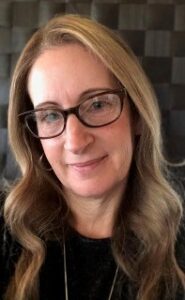
Sophie Lauver, MS, RD, LDN, NBC-HWC
Registered Dietitian for Aeroflow Health
Aeroflow Health recognizes the need for increased access to nutrition education and empowerment. This growing gap in care led our teams to launch Aeroflow Nutrition Services. We believe that personalized medical nutrition therapy not only aids in preventing long-term health complications but it also is one way that we as providers can extend a helping hand and come alongside you as you manage your chronic disease and strive for a healthy lifestyle.
At Aeroflow Health, we stand by your side as your unwavering healthcare partner, providing you access to top-notch medical essentials such as continuous glucose monitors (CGMs), breast pumps, incontinence products, and CPAP supplies – all covered through insurance. We recognize the distinct health journey you are on and believe it deserves nothing but the best. Our commitment extends beyond products; it’s about elevating health outcomes and bridging care gaps to ensure you receive the quality care you deserve. Our addition of Aeroflow Nutrition Services aligns seamlessly with our mission, reinforcing our dedication to serving you comprehensively with education on your wellness journey.
Aeroflow Nutrition Services – Our Why
Aeroflow Nutrition Services takes a patient-driven, whole-person approach. We explore individual’s unique health desires and needs and guide towards sustainable goals through the impactful method of motivational interviewing. Our philosophy is rooted in curiosity, aiming to empower you with knowledge that becomes a catalyst for positive change. Not only that but we understand the anxieties that can surround the topic of food, and so our mission is to reduce this stress and replace it with enthusiasm for a lifestyle centered on healthy eating and living. At Aeroflow, we take an evidence-based approach to weight loss, meaning we view health holistically on a macro scale rather than reducing it solely to weight. By simplifying concepts like meal planning and energy balance, we’re able to give you actionable nutrition tips for day-to-day living.
Medical Nutrition Therapy – Who Is It For & What Does It Entail?
Medical Nutrition Therapy is an evidence-based, client-driven process for managing or treating medical conditions through nutrition. Delivered by a Registered Dietitian, Aeroflow’s nutrition therapy program is designed to help those interested in understanding how nutrition can lead to a more sustainable and enjoyable lifestyle.
Do you feel anxiety and tension when trying to meal prep? What about feeling isolated from family and friends due to your different dietary needs? We get it. Our program has been built with all of these stressors in mind.
Registered Dietitians would come alongside you to help you achieve the following:
- A diet rich in whole grains, lean protein, fiber, and plant-based foods
- A diet low in saturated fat, sodium, and meat
- Mild to moderate weight loss
- A game-plan for 150 minutes a week of moderate-intensity physical activity
- Stress reduction
- Familial, professional, and community support
We understand that your health story is the product of many lifestyle and genetic factors. To ensure our Registered Dieticians are able to craft treatment courses catered to your specific needs and goals, those who take part in the program undergo a comprehensive initial evaluation that helps provide a holistic health picture. During medical nutrition sessions, you have the opportunity to explore and discuss your comprehensive health profile, covering medical and nutrition history, sleep patterns, weight fluctuations and goals, stress management, hydration, and physical activity.
Some additional program highlights include:
- Simple and personalized lifestyle tips to help build sustainable routines that lead to a more positive overall health experience, specifically for those living with diabetes
- Evidence-based suggestions and support from a caring, creative, and non-judgemental Registered Dietitian
- Guides to easy-to-prepare meals and snacks that leave you feeling satisfied
- Reduced blood glucose/A1C levels
- Reduced risk of heart disease and stroke
- Reduced cholesterol and blood pressure
- Increased energy and confidence that will lead to less stress
- Less anxiety around meal planning, grocery shopping, preparing meals, and going out to eat
- Knowledge regarding trends and data based on your specific nutritional habits
Interested In Joining The Program?

Sophie Lauver, MS, RD, LDN, NBC-HWC
Sophie Lauver is a Registered Dietitian and Board Certified Health and Wellness Coach passionate about helping people take control of their health and get excited about nutrition. Sophie has a Bachelor's degree in Communication from the University of Delaware and a Master’s degree in Dietetics from Eastern Michigan University. Sophie has worked in a wide variety of settings including hospitals, long-term care, rehabilitation, and wellness technology, and most recently, served as the director of the nation's largest diabetes prevention program. Sophie lives in Baltimore, MD with her husband, infant son, and their two dogs and two cats. When she’s not working with clients, she enjoys cooking, not doing dishes, trying new restaurants, and spending time being active outside (especially on warm and sunny days).

















